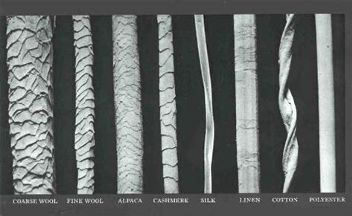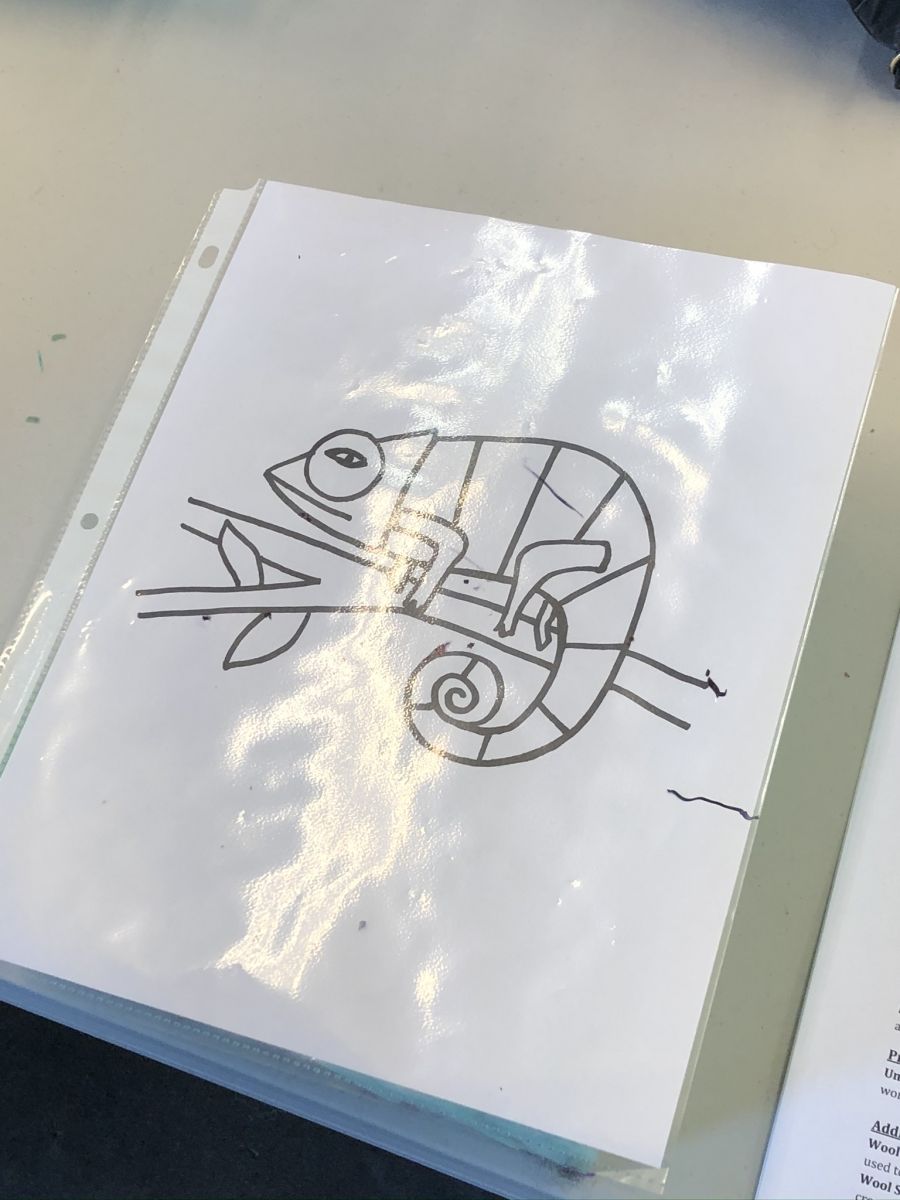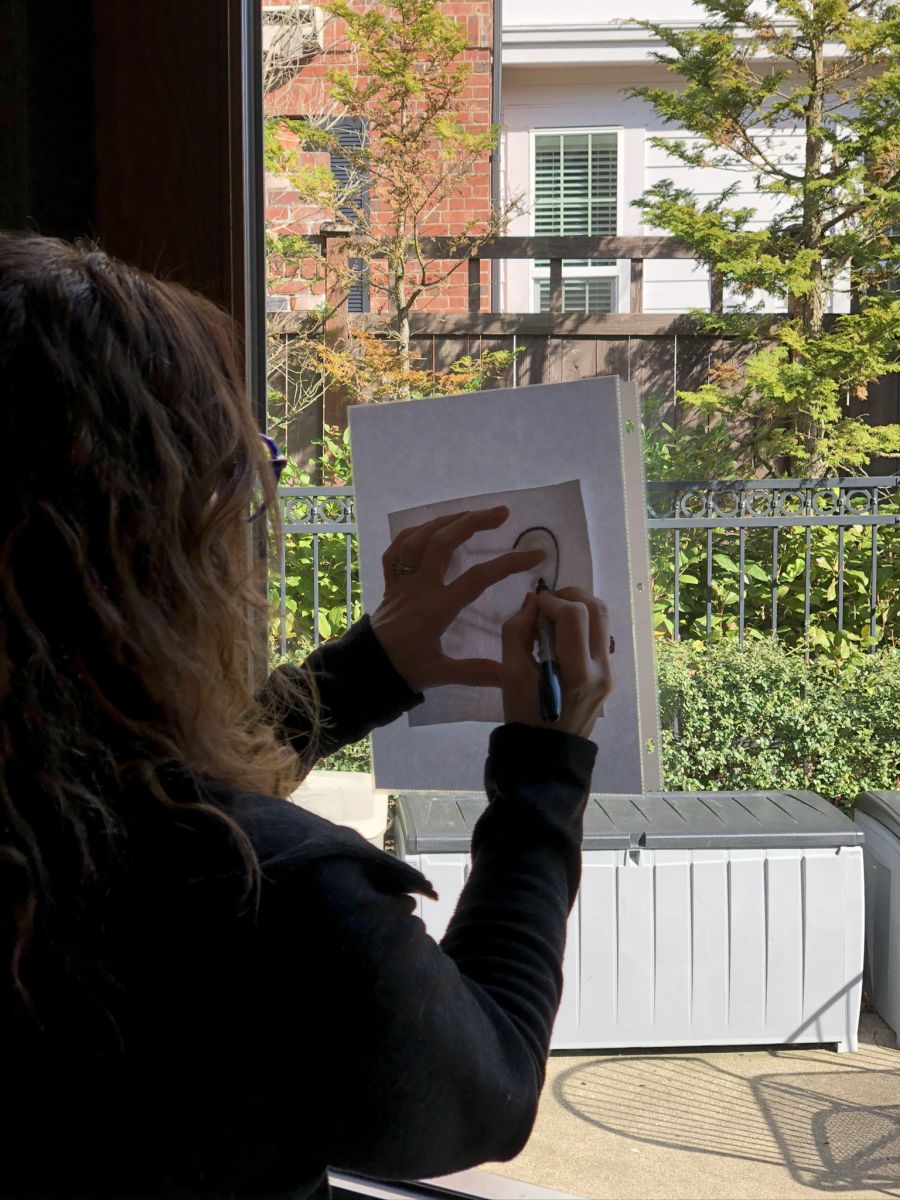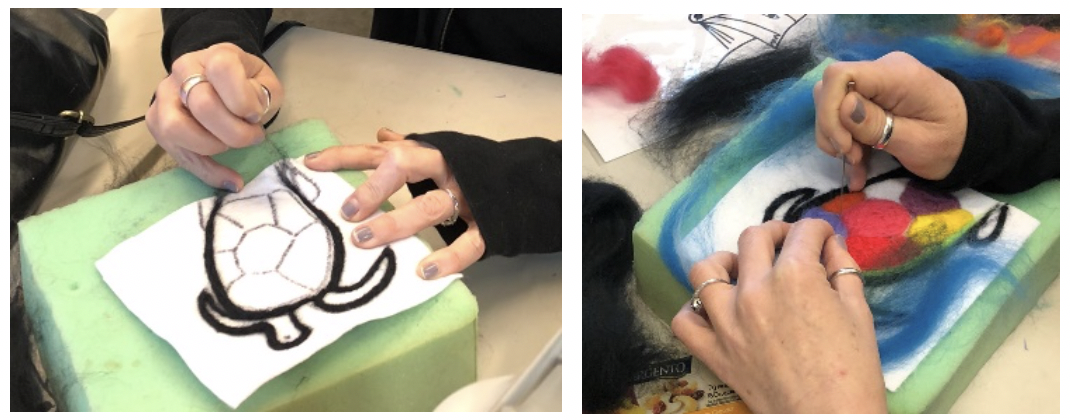Inspired by artist Melanie Mikecz, students will learn how to safely needle felt wool, “painting with wool” to create a painterly work. Recommended for 5th Graders.
Line: the flat path of a dot through space used by artists to control the viewer’s eye movement; a long narrow mark or stroke made on or in a surface.
Shape: a two-dimensional (flat) area enclosed by a line.
Texture: the way a work feels when touched or the portrayal of the quality of a surface. Some words to describe texture are: rough, smooth, coarse, soft, gritty, prickly, or slick.
Unity: a successful combination of the elements of visual arts to create a sense of wholeness and visual completion in an artwork.
Felting: becoming permanently matted or entangled.
Illustrator: a person who draws or creates pictures for magazines, books, advertising or other printed or digital media.
Wool: the fine, soft, curly, or wavy hair forming the coat of a sheep, goat, or similar animal which is used to make yarn and cloth.
Wool Scales: the exposed edges of the scales pointing towards the tip of a fiber (hair), creating a jagged edge (images below). Fibers cross and slip over one another giving wool the ability to be felted.
Melanie Mikecz is a freelance artist who has worked as an illustrator and designer in Boston, London and California. She currently lives in San Francisco with her husband and two daughters. Melanie specializes in a digital mixed media style.
All of her illustrations are created digitally, and she considers them to be mixed media. She starts with a painting or basic design on paper, scans it and then manipulated it in Photoshop. The final work is a digital file.
Melanie’s art is full of bright colors! She uses geometric shapes, patterns, animals & landscapes. and is inspired by artists like Paul Klee & Wassily Kandinsky.
Her clients include: American Greetings, Brooks Running, Chronicle Books, GAP, Hallmark, Land of Nod/Crate & Kids, Minted, Papyrus, Sims Snowboards, Sunglass Hut, Usborne Books and many many more.

Cut 6”x 6” craft felt for each student.
Print about 30 different black and white animal images by Melanie Mikecz or other animal images that fit within the 6”x 6” size for students to trace.
Find images of wool fiber under a microscope to show students.
Where did this amazing bag of brightly colored wool come from?
Define Illustrator?
What is a felted textile?
Felting needle safety.
Can the students say?






Lesson written by Elizabeth Jackson. Additional resources include https://www.mm-illustration.com/; https://www.instagram.com/melaniemikecz/; https://www.bing.com/images/search?q=simple+animal+line+drawing&FORM=HDRSC2; before adding color: https://prezi.com/ayc2ruvpjd_g/artist-melanie-mikecz/; https://paintbrushrocket.blogspot.com/2019/03/6th-grade-needle-felting.html#comment-form.
21st Century Thinking Skills
Observing, cause and effect, creating.
Students will use visual observation, visualization and decision-making skills by observing impressionistic landscape paintings and then create their own landscape made from the wool felting technique.
WA State Learning Standards
(VA:Cr2.1.5) a. Experiment and develop skills in multiple art-making techniques and approaches through practice.
(VA:Cr2.2.5) a. Demonstrate quality craftsmanship through care for and use of materials, tools, and equipment.
(VA:Pr5.1.5) a. Develop a logical argument for safe and effective use of materials and techniques for preparing and presenting artwork. Students are responsible for finishing their work in a way that is hangable and viewable.
(VA:Re8.1.5) a. Interpret art by analyzing characteristics of form and structure, contextual information, subject matter, visual elements, and use of media to identify ideas and mood conveyed.
(VA:Cn10.1.5) a. Apply formal and conceptual vocabularies of art and design to view surroundings in new ways through art-making. The can happen with the expansion of students understanding of wool, where it comes from and how it has been used.
Please note: These lesson plans are intended for non-profit use only. Use of these plans for commercial purposes should give attribution to the Issaquah Schools Foundation and be accompanied by a nominal donation at www.isfdn.org/donate. Thank you.
Fueling Success for Every Student, Every School